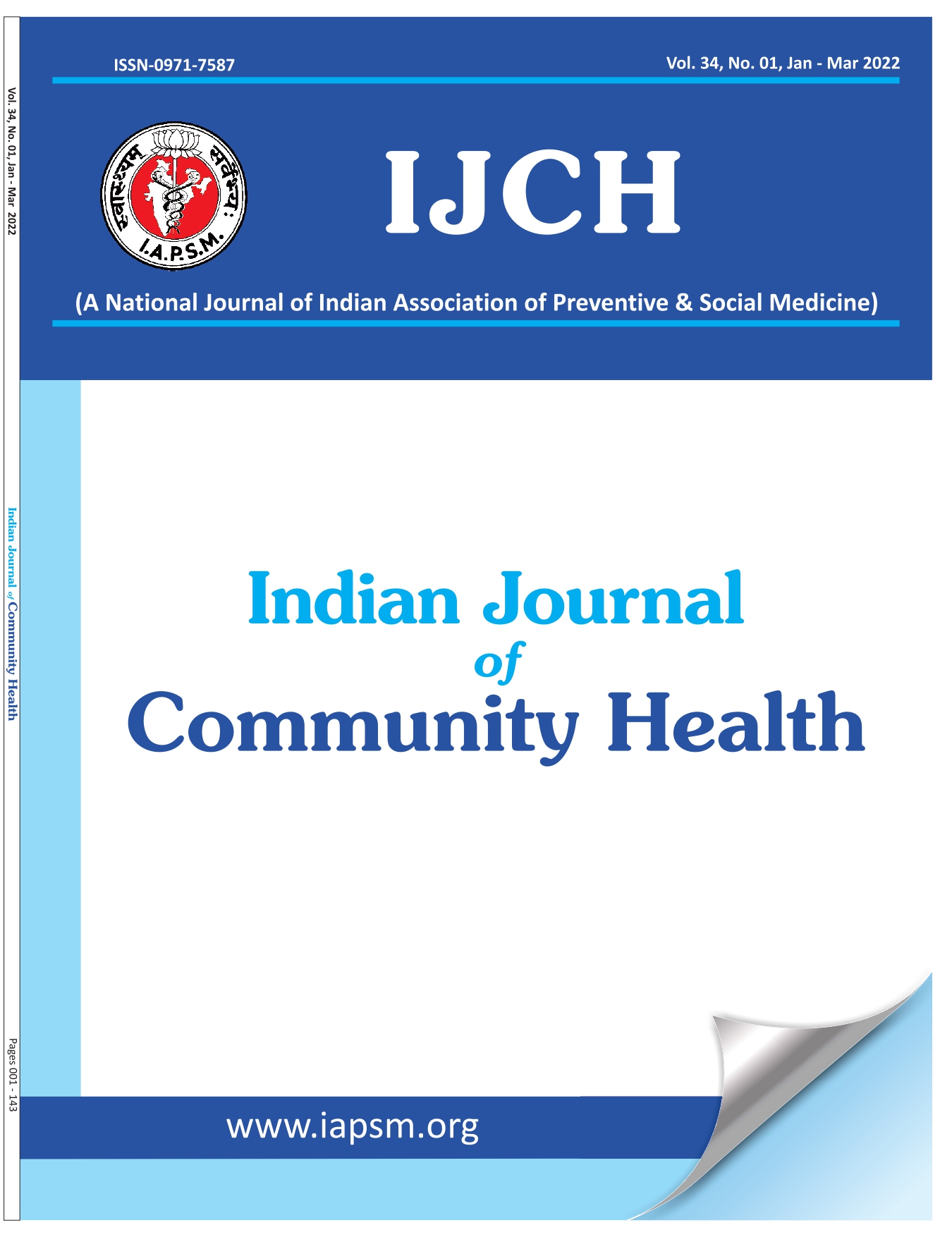Evaluation of National Injury Surveillance Centre, India, 2015-16
DOI:
https://doi.org/10.47203/IJCH.2020.v32i01.011Keywords:
Injury, Surveillance, Data, Accuracy, Timeliness;, Management, IndiaAbstract
Background: Globally, injuries accounts for 9% of all deaths, but India account for 11%. Due to limited data on injury characteristics, National Injury Surveillance Centre (NISC) was established in 2014 in New Delhi. Aim & Objectives: To evaluate attributes of NISC and make evidence-based recommendations. Methods and Material: We conducted cross-sectional study and used US Centers for Disease Control and Prevention guidelines to assess simplicity, flexibility, acceptability, stability, timeliness, representativeness, usefulness, and data quality. We reviewed 2015 records and interviewed 20 key-informants. We used Epi-Info7 for analysis. Results: NISC captured 4043 injuries in 2015 from one hospital. Among five data entry operators, four reported lengthy format, but all reported it easy. Among ten relevant key-informants, all reported data-management software easy. System demonstrated flexibility in three variables. All 20 staff reported willingness to participate, and 90% felt quarterly reporting acceptable. Regarding stability, data was collected for 361/365 days. Quarterly reports were available but only submitted annually. Regarding usefulness, all WHO-recommended variables included. Regarding data quality, 17% data-fields were missing. Conclusion: NISC is simple, flexible, stable, acceptable and potentially useful based on data captured. Timeliness based on annual reporting is high, can be improved to quarterly. We recommend training to improve data quality and integration of additional hospitals to improve representativeness.
Downloads
References
World Health Statistics 2015 report. World Health Organization page-60 [Accessed on 18/12/19]. Available from: http://www.who.int/gho/publications/world_health_statistics/2015/en/.
EFC Memorandum on Continuation of the scheme “Capacity Building for developing trauma care facilities in Govt. Hospitals on National highways” during 12th Five Year Plan;25-26.
Updated Guidelines for Evaluating Public Health Surveillance Systems. Recommendations from the Guidelines Working Group. MMWR. July 27, 2001 / Vol. 50 / No. RR-13.
World Health Organization, 2001, Injury Surveillance Guidelines. [Accessed on 19/12/19]. Available from: http://www.who.int/violence_injury_prevention/publications/surveillance/surveillance_guidelines/en/.
World Health Organization, 2012. Profile of Injury Surveillance Systems in selected Member States of the Asia-Pacific Region. [Accessed on 21/12/19]. Available from: http://apps.searo.who.int/pds_docs/B4799.pdf.
X Liu, L Li, H Cui, X Liu, V W Jackson. Evaluation of an emergency department-based injury surveillance project in China using WHO guidelines. BMJ Injury Prevention 2009; 15 73-74 Published Online First: 03 Apr 2009. doi: 10. 1136/ip. 2009.021790. [Accessed on 18/12/19]. Available from: http://injuryprevention.bmj.com/content/15/2/105.
Rebecca J Mitchell, Ann Williamson and Rod O’ Connor. The Development of an evaluation framework for injury surveillance system, Sydney, Australia.BMC Public Health 2009, 9:260. [Accessed on 25/01/20]. Available from: http://www.biomedcentral.com/1471-2458/9/260.
R Saad, H S Jaffar, M EI Setouhy, J M Hirshon. Evaluation of the National Injury Surveillance System in Egypt. BMJ Injury Prevention 2010, Volume 16, Issue suppl 1. [Accessed on 18/12/19]. Available from: http://injuryprevention.bmj.com/content/16/Suppl_1/A56.2.
Australia-India Trauma Systems Collaboration. [Accessed on 18/12/19]. Available from:http://aitsc.org/programs/.
Jayaram A, Gururaj G, Rajanna MS, et al Findings of a injury surveillance programme done in a rural district setup in India Injury Prevention 2010;16:A262. [Accessed on 23/12/19]. Available from: http://injuryprevention.bmj.com/content/injuryprev/16/Suppl1/A262.1.full.pdf
Downloads
Published
How to Cite
License
Copyright (c) 2020 Indian Journal of Community Health

This work is licensed under a Creative Commons Attribution-NonCommercial-NoDerivatives 4.0 International License.





